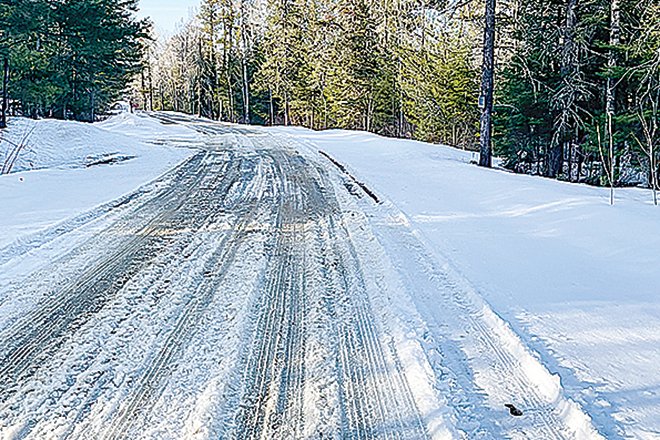Support the Timberjay by making a donation.
Road crews idled as they wait for spring weather
Officials say 1,500 miles of gravel roads worst in recent memory
REGIONAL— A seemingly never-ending series of snowfalls in April has left county roads across the region in the worst condition in recent memory, and St. Louis County public works officials say …
This item is available in full to subscribers.
Attention subscribers
To continue reading, you will need to either log in to your subscriber account, or purchase a new subscription.
If you are a current print subscriber, you can set up a free website account and connect your subscription to it by clicking here.
If you are a digital subscriber with an active, online-only subscription then you already have an account here. Just reset your password if you've not yet logged in to your account on this new site.
Otherwise, click here to view your options for subscribing.
Please log in to continue |
Road crews idled as they wait for spring weather
Officials say 1,500 miles of gravel roads worst in recent memory
REGIONAL— A seemingly never-ending series of snowfalls in April has left county roads across the region in the worst condition in recent memory, and St. Louis County public works officials say there’s little they can do about the situation other than wait.
With 1,500 miles of gravel roads, which provide home access to thousands of county residents, the current conditions haven’t gone unnoticed, acknowledged Brian Boder, with the county public works office in Pike Lake. County officials admit the roads are bad. “It’s miserable,” admits Boder, who said county officials have been trying to get the word out about the situation so people understand.
It appears the brief warm-up in late March is part of the problem. Several days of spring-like weather thawed road surfaces and prompted the posting of load limits for gravel roads across the county. That’s prevented county road crews from either snowplowing or grading as the combination of freezing and thawing, along with at least half a dozen moderate snowfalls so far this month, have left gravel roads frequently snow-covered, with either frozen ruts or a muddy mess, depending on the day.
“When road restrictions hit, gravel roads are automatically a five-ton posting,” said Boder. County plow trucks run 45,000-50,000 pounds unloaded and tip the scales at 70,000 pounds with a load of salt and gravel. “For us to go out under the current conditions would do more damage than we could ever justify,” he added.
The county plow trucks don’t have the fine blade control of most smaller plows, designed for pickups, which means they require a hard, frozen surface to prevent road damage. Once the top layer of the gravel roads begins to thaw, plowing becomes difficult, notes Boder. “We’d be plowing a lot of gravel into the ditches,” he said.
While the county does have underbody plows that it can deploy in the event of a major snowfall, he said it hasn’t been worth the mess it would create given that most of recent snows have been in the three-to-five inch range, which is generally passable for most vehicles.
The abundance of potholes right now isn’t unusual in the late winter or early spring, but the frequency of precipitation this month has made it almost impossible for the county to address the issue. “We can’t grade under these conditions,” said Boder. “We’d just make mud.”
Bringing in more material isn’t an option either, notes Boder, because any fresh gravel would only add to the muddy conditions.
For now, said Boder, residents along gravel roads should keep their fingers crossed for a change in the weather pattern, in favor of warmer and drier conditions. “If we were to have a string of five days of dry weather, we might try to get out there and take care of some of the worst of the worst,” he said.
Meanwhile, the weather forecast offers little in the way of relief. On top of Monday’s and Wednesday’s snowfalls, the forecast is calling for rain on Saturday, with colder weather and on and off chances of rain or snow next week.






